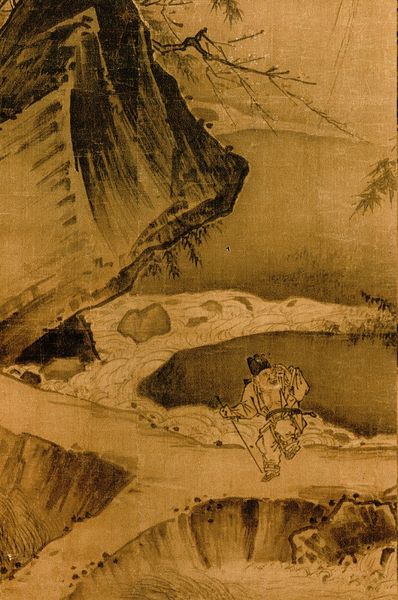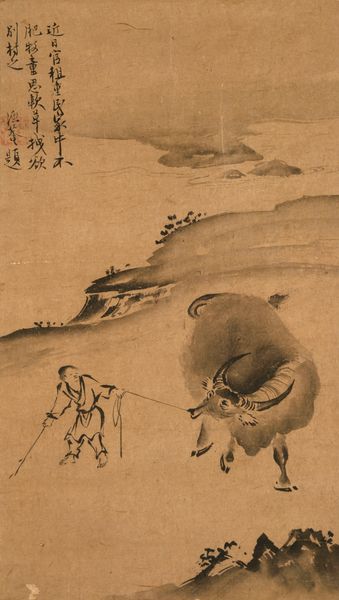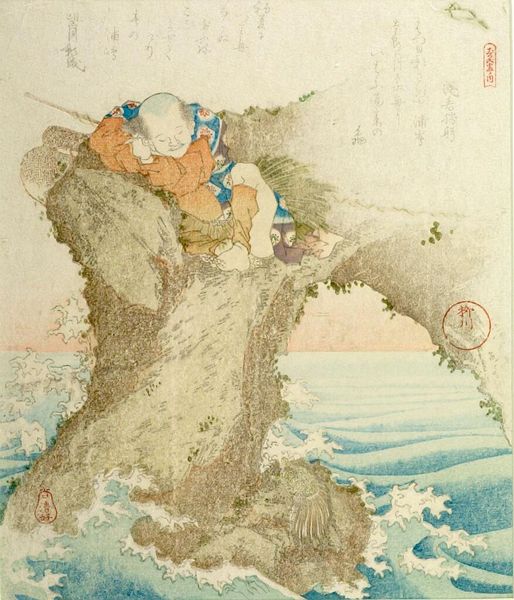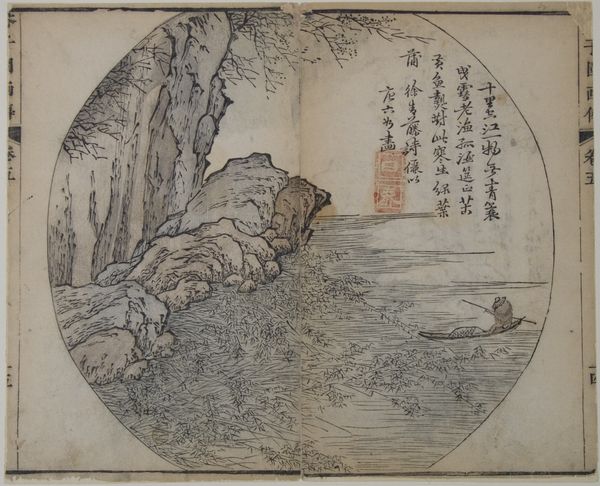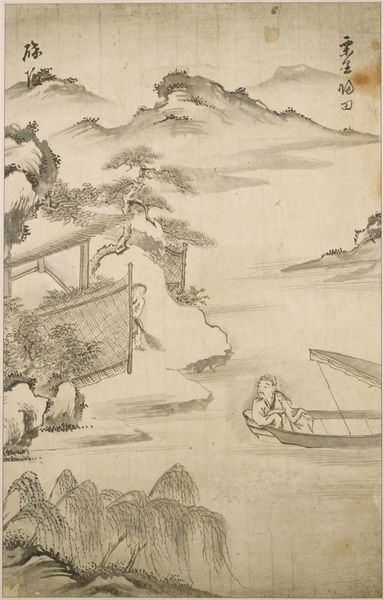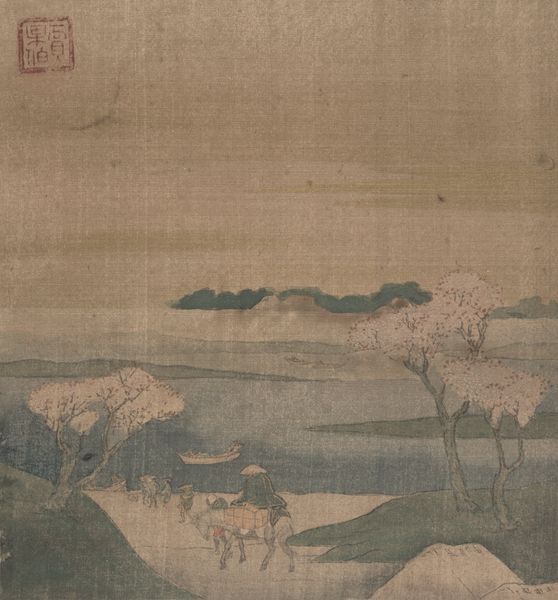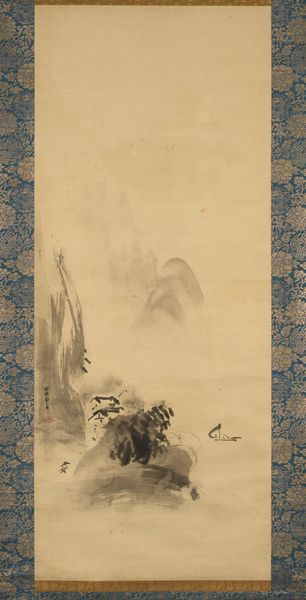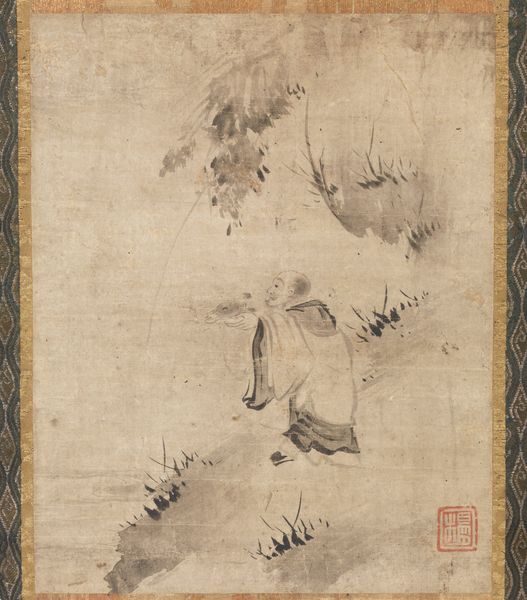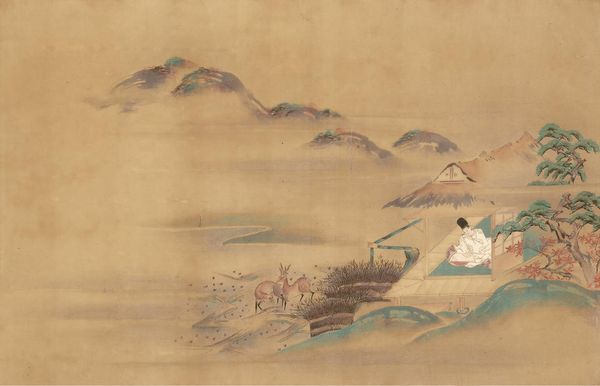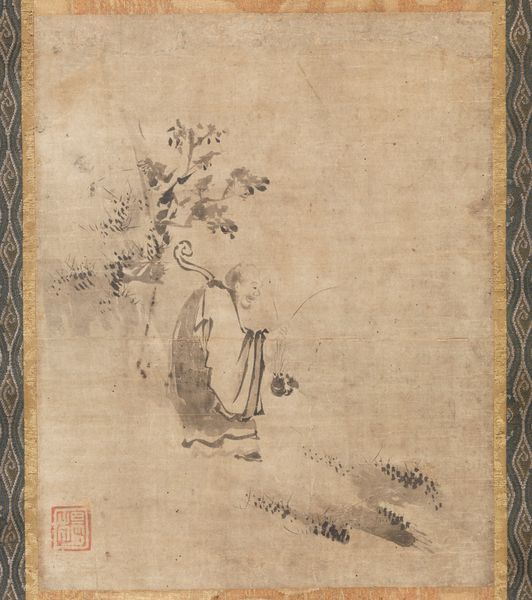
Painting on Zen Enlightenment (Sanping baring his chest and Shigong stretching his bow)
0:00
0:00
drawing, painting, paper, ink
#
drawing
#
ink painting
#
painting
#
asian-art
#
landscape
#
figuration
#
paper
#
ink
#
coloured pencil
#
watercolor
Copyright: Public domain
This ink-wash painting, "Painting on Zen Enlightenment (Sanping baring his chest and Shigong stretching his bow)," was made by Kanō Motonobu in the late 15th or early 16th century. At first glance, the subdued ink tones evoke a sense of calm, almost meditative, stillness. The composition, while seemingly simple, is structured around two figures set within a landscape featuring a body of water in the background. The figure on the left, Sanping, stands with his chest bared, embodying a state of openness and vulnerability. In contrast, Shigong, on the right, is depicted drawing a bow, a gesture of readiness or perhaps defiance. This contrast creates a visual tension, a play between exposure and intention. The landscape elements—the twisted pine tree, rocks, and mist—aren't just a backdrop. Instead, they act as symbolic forms that contribute to the painting's meaning. Consider how the artist uses empty space, a kind of visual silence, to highlight the figures' actions. This interplay between form and void invites us to question the essence of Zen enlightenment itself: Is it the act of revealing oneself or the readiness to defend one's understanding? This work challenges us to think about how visual elements create meaning, inviting multiple interpretations of a timeless philosophical idea.
Comments
No comments
Be the first to comment and join the conversation on the ultimate creative platform.
